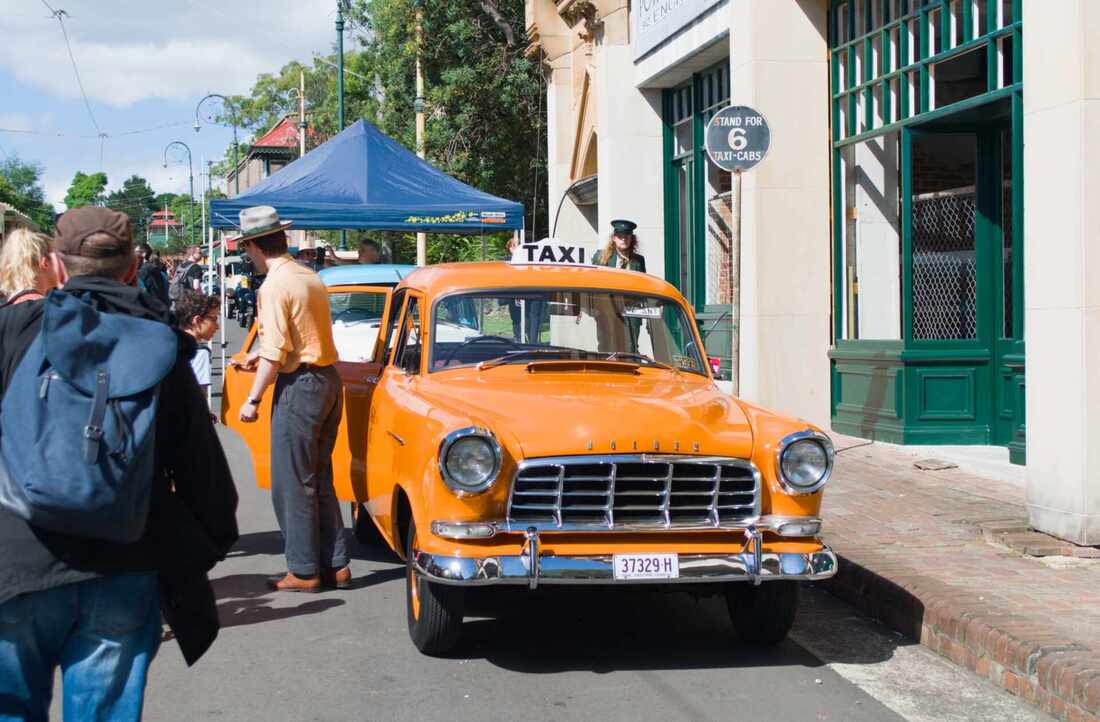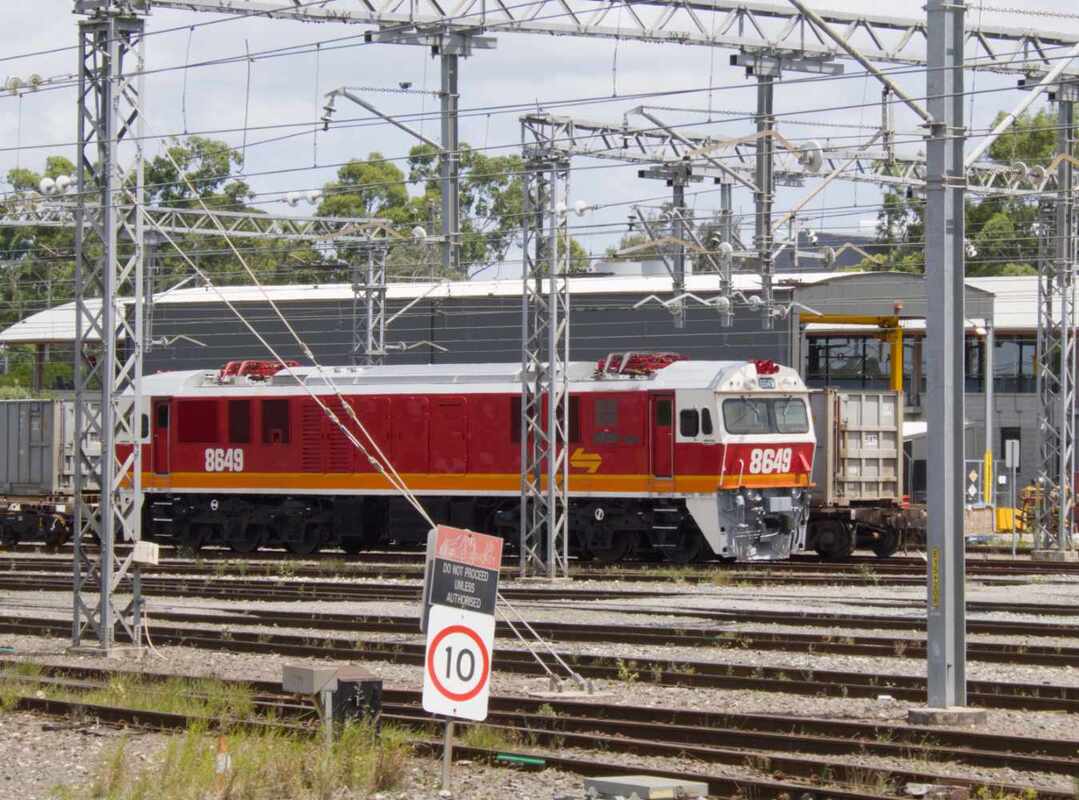|
Rail journey to Thirlmere, NSW. A selection of photographs from mine and my father's journey on Transport Heritage NSW's NSW Rail Museum Express on Easter Sunday (31 March 2024) to Thirlmere and back again behind NSW AD60 Class Garratt Steam Locomotive No.6029. Enjoy! 6029 at the head of the NSW Rail Museum Express on Central Station Platform 3, awaiting the departure of the Royal Easter Show service to Flemington for connections to Sydney Olympic Park. On our way through Picton the sounds and sight of 6029 startled the invading bat colonies that have taken up residence among the trees surrounding the Stonequarry Creek Viaduct. "Tin Hare" Railmotor CPH 18 and NSW 42 Class 4201 sitting under the main shed at the NSW Rail Museum, Thirlmere. Over the fence view of 6029 before our departure from the NSW Rail Museum back to Sydney. An interior shot of the Lounge Car that my father and I travelled in for the journey to and from Thirlmere. If you ever want to know what it's like to be inside of an agitator, ride behind a Garratt. 6029 on the return to Picton Station. Catching the evening sun's light glinting off the domes of the Old Rite Russian Orthodox Church as we pass by heading towards nearby Lidcombe Station. With a piercing shriek, of what may have been it's safety valve, 6029 departed Strathfield Station for Sydney Central and we likewise departed from the express to make our own way home before the evening became to late for comfort. Vincent Cavanagh 3 Apr 2024
0 Comments
Trains, trams and automobiles. 1) F1 arriving into Platform 1 at Sydney Central station with car C 3426 leading. It was the leading car on the official “first train” to cross the Sydney Harbour Bridge on opening day in 1932. (Vincent Cavanagh) My father and I were in attendance on Sunday (25 February 2024) for our first Sydney Tramway Festival, which is held annually in Loftus, NSW. We had booked tickets for the Sydney Tramway Festival Express from Sydney Central to Loftus, and back, aboard the Sydney Single Deck Suburban F1, a.k.a. “the Red Lady”, which is operated under partnership between Transport Heritage NSW, Historic Electric Traction and Sydney Trains. 2) F1 readying to depart Central, Platform 1. Motor car C 7396 is on the Loftus end of the train. (Vincent Cavanagh) 3) Passing through Oatley station, where the first electric train ran from here to St James on 16 August 1926. (Vincent Cavanagh) We departed Sydney Central at 9:28am, travelling on the Eastern Suburbs Line to Redfern before continuing on down the Illawarra/South Coast Line proper towards Loftus railway station. We arrived at Loftus two minutes ahead of our scheduled arrival at 10:20am. Upon leaving F1 we were greeted on the platform and issued our tickets to the Sydney Tramway Museum by museum staff. The price of the entry tickets was included in the booking for travelling on F1. 4) Two kinds of heritage transport greeting us at the entrance to the Sydney Tramway Museum: a penny-farthing bicycle and Brisbane ‘Dropcentre’ #295. (Vincent Cavanagh) 5) 1975 Holden FC ‘Yellow Cab Co.’ taxi, Sydney Bus Museum. (Vincent Cavanagh) 6) Model A Ford in resplendent red paintwork among the line of members’ vehicles from the Model A Ford Club of NSW. (Vincent Cavanagh) We had only about an hour-and-a-half or so to look around the museum before we had to return to the station for our return journey to Sydney Central at approximately 12:05pm. Thankfully when we got to the museum gates, we found out that the museum had reserved the coupled Sydney O-Class trams (#1111 and Powerhouse Museum #805) for the passengers arrived from F1. We promptly took our seats as the tram set was about to head off on its shuttle along the rails to the Sutherland railway substation and back again, passing Loftus TAFE, University of Wollongong’s Sutherland campus and the Sutherland Army Depot. 7) 1920s P-Class #1497 ‘Toastrack’ tram returning from Sutherland railway substation, as viewed from Powerhouse Museum #805. (Vincent Cavanagh) 8) Powerhouse Museum O-Class #805 coupled behind Sydney Tramway Museum #1111 awaiting their next run up the line to the substation. (Vincent Cavanagh) The Tramway Festival itself was not solely concerned with trams. The museum was host to classic automobile clubs, model ship builders and other modellers who were set up inside of Sutherland substation—sadly, we didn’t have any time to go in look ourselves—and the Sydney Bus Museum, which had brought along a heritage Sydney double-decker bus and Yellow Cab Co. taxi for visitors to ride in for the price of a gold coin donation—yet again, too little time. 9) Ballarat ‘Dropcentre’ #37 queued behind R1-Class #2001, both awaiting their next journeys. (Vincent Cavanagh) After grabbing lunch from the 1st Sutherland Sea Scouts BBQ set up under the awnings of the Railway Square waiting shed (1907–1973) and a transference of monies inside the Museum Bookshop we made our way back to Loftus station to await the return of F1 from a siding in Waterfall station. 13) State Rail Authority (SRA) map of Sydney System network, circa mid-1980s, above the doorway in C 3426. (Vincent Cavanagh) 14) F1 in Sydney Central Platform 1 at the end of the morning Sydney Tramway Festival Express shuttle. (Vincent Cavanagh) 15) F1 awaiting the start of the evening shuttle. Motor car C 7396 on the Loftus end of the train. (Vincent Cavanagh) We returned to Sydney Central at 12:55pm and made our farewells with F1. The second, and last, shuttle of the day would be leaving at 1:30pm. All in all, it was a very full day out indeed. Vincent Cavanagh 27 Feb 2024. A day out on Sydney rails. On 28 January 2024, my father and I partook in the East Coast Heritage Rail: Goods Road* Tour from Sydney Central Station. We were on the second of the two tours for the day: 11am and 1pm AEDT, respectively. The tour departed and arrived on Central Station Platform 3. It was a heritage consist of various Department of Railways New South Wales railway carriages and hauled for the day by a 421 Class diesel locomotive, 42105 ‘Chumsayer’, owned and operated by private owner Chumrail. We were booked in an N type carriage at the front of the train next to 42105. Our train departed Central at 1pm on its balloon loop route encompassing the Inner West and Canterbury Bankstown regions. We headed out on the Western Line (T1) towards Lidcombe where we turned south briefly onto the Bankstown Line (T3) before turning back eastwards, just after Regents Park Station, onto the Sefton Goods Line. We passed through Chullora Rail Yard on the southern boundary of Rookwood Cemetery and then turned south once more heading through Enfield Marshalling Yards, one of the more major and visible reminders of the original extent of Enfield suburb before boundary redistributions by government. After Enfield we re-joined the Bankstown Line proper at Campsie, passing through Dulwich Hill and having a gander** at the unopened Sydney Metro conversions of half of the Bankstown Line at Sydenham as part of the Metro South rail project. We returned to Central Station an approximate hour-and-twenty-minutes after our departure. All in all, it was a good day out on the rails, but I think it’s only helped crystalize my preference for journeys that have set destinations more so than just “wandering about”, but that’s just me. Vincent Cavanagh 21 Feb 2024 * An unfortunate Americanization of railway terminology in the past few decades in NSW. Railways in NSW (at least from their inception) used the British railway vernacular (railway, lines, carriages). Whereas South Australia has actively used the United States vernacular (railroad, roads, cars) ever since the appointment of American William Webb as Chief Commissioner in 1922.
** Gander : to have/take a quick look. |
News and Other StuffAbout recent artwork, inspirations and other things I find interesting. Archives
June 2024
Categories
All
|
All artwork and images on this website (unless stated otherwise) are the property of Vincent Cavanagh and cannot be used without his permission.
|
Social Links
|
Powered by Weebly
|































 RSS Feed
RSS Feed